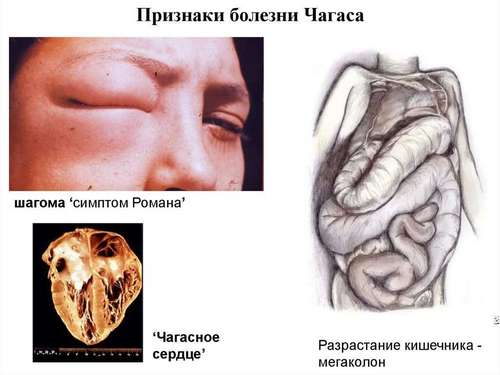Viral hepatitis b (serum hepatitis) is an infectious disease of the liver, occurring in different clinical variants (from asymptomatic carriage to destruction of the hepatic parenchyma). Hepatitis b the defeat of the liver cells is autoimmune in nature. Enough to infection the concentration of virus is only in the biological fluids of the patient.
Therefore, infection with hepatitis b may be transmitted parenterally by blood transfusion and conducting various traumatic procedures (dental procedures, tattoos, pedicure, body piercing) as well as sexually.
In the diagnosis of hepatitis b is crucial in identifying blood antigen HbsAg and HbcIgM antibodies. Treatment of viral hepatitis b includes a base antiviral therapy, strict adherence to the diet, detoxification and symptomatic treatment.
Viral hepatitis B
Viral hepatitis b (serum hepatitis) is an infectious disease of the liver, occurring in different clinical variants (from asymptomatic carriage to destruction of the hepatic parenchyma). Hepatitis b the defeat of the liver cells is autoimmune in nature.
Characterization of the pathogen
The hepatitis b virus – DNA, belongs to the genus Orthohepadnavirus. In infected individuals blood detect viruses are of three types, distinguished by morphological characters. Spherical and filamentous forms of virus particles do not possess the virulence, infectious exhibit the properties of particles Dane – double-layered crew paleostructure viral forms. Their population in the blood rarely exceed 7 %. The virus particle hepatitis b has surface antigen HbsAg, and three internal antigen: HBeAg, HBcAg and HbxAg.

Resistance of the virus to environmental conditions is very high. In the blood and drugs the virus remains viable for a year, maybe a few months to exist at room temperature for linen, medical instruments, items contaminated with blood of a patient. Virus inactivation is carried out by treatment in autoclaves heated to 120°C for 45 minutes or in a hot-cupboard at 180 °C for 60 minutes. The virus dies when exposed to chemical disinfectants: chloramine, formalin, hydrogen peroxide.
Source and reservoir of viral hepatitis are sick people and healthy virus carriers. Blood infected with hepatitis b people to become contagious much earlier than the first observed clinical manifestations. In 5-10% of cases develop chronic asymptomatic carriage. The hepatitis b virus is transmitted through contact with different biological fluids (blood, semen, urine, saliva, bile, tears, milk). The main epidemiological risk are blood, semen and, to some extent, saliva, since it is usually only in these fluids, the concentration of virus is sufficient for infection.
Transmission is mainly parenteral: when the blood transfusions, medical procedures using contaminated equipment, during procedures in dentistry, and also at traumatic processes: the application of a tattoo and piercing. There is a possibility of infection at the nail salons when conducting edging manicure or pedicure. Contact transmission path is realized through sexual contact and everyday life in shared use of personal hygiene items. The virus is introduced into the human body through microdamages of the skin and mucous membranes.
Vertical transmission is implemented intrapartum, during normal pregnancy the placental barrier to the virus does not pass, however, in the case of placental abruption, possible virus transmission prior to birth. The probability of fetal infection increases when identifying a pregnant HbeAg in addition to HbsAg. People have a fairly high susceptibility to infection. If transfusion transmission of hepatitis develops in 50-90% of cases. The probability of developing disease after infection depends on the dose of the pathogen and condition of General immunity. After the transfer of the disease is formed long lasting, probably lifelong immunity.
The vast majority of falling ill with hepatitis b are persons aged 15-30 years. Among the dead from this disease, the proportion of drug users is 80 %. Persons engaged in drug injections, have the highest risk of Contracting hepatitis b Due to frequent direct contact with the blood by health staff (surgeons and surgical nurses, technicians, dentists, employees of blood transfusion stations, etc.) are also at risk for viral hepatitis B.
Symptoms of viral hepatitis In
The incubation period of hepatitis b varies within wide limits, the interval from infection to development of clinical symptoms can range from 30 to 180 days. To estimate the incubation period of chronic hepatitis b is often impossible. Acute viral hepatitis often starts similar to viral hepatitis A, however, it predzheltushnogo period can occur and arthralgic form, and asthenovegetative or dyspeptic.

Dyspeptic variant of the flow is characterized by a loss of appetite (up to anorexia), persistent nausea, episodes of causeless vomiting. For influenza-like forms of the clinical course djelturanga period of hepatitis b is characterized by the increase in temperature and obscheintoksikatsionnogo symptoms, usually without catarrhal symptoms, but with frequent nocturnal and early morning, arthralgia (in this case the joints are not visually changed). After motion in the joint pain usually subsides some time.
If in this period, there is arthralgia, combined with rashes on the type of urticaria, the disease promises to be more severe. Most often such symptoms are accompanied by fever. In predzheltushnogo phase may be marked weakness, drowsiness, dizziness, bleeding gums and episodes of nasal bleeding (hemorrhagic syndrome).
With the appearance of jaundice improvement is not being observed, most common symptoms is compounded by: growing dyspepsia, asthenia, appears itching, amplified hemorrhage (in women hemorrhagic syndrome can contribute to early onset and intensity of menstruation). Arthralgia and rash in icteric period disappear. Skin and mucous membranes have an intense ohranoy hue, marked with petechiae and rounded hemorrhage, urine darkens, and stool becomes lighter until the complete discoloration. The liver of patients increases in size, the edge of her acts from under the costal arch, to the touch, painful. If intensive isterichnost the skin, the liver retains its normal size, it is the harbinger of a more severe course of infection.
In half and more cases, hepatomegaly is accompanied by enlargement of the spleen. From the side of cardiovascular system: bradycardia (or tachycardia with severe hepatitis), moderate hypotension. The General condition is characterized by apathy, weakness, dizziness, marked insomnia. Icteric period can last a month or more, followed by a period of convalescence: first, dyspeptic symptoms disappear, then a gradual regression of jaundice symptoms and normalization of bilirubin level. Return the liver to normal size often takes several months.
In the case of the tendency to cholestasis, hepatitis can purchase the slow (torpid). The intoxication weakly expressed, consistently elevated levels of bilirubin and liver enzymes, Kal aholic, dark urine, liver steadfastly increased, the body temperature is kept in the low grade range. In 5-10% of cases of viral hepatitis occurs in the chronic form, and contributes to the development of viral liver cirrhosis.
Complications of viral hepatitis In
The most feared complication of viral hepatitis b, characterized by a high degree of mortality is acute liver failure (hepatalgia, hepatic coma). In the case of massive death of hepatocytes, a significant loss of functionality of the liver develops severe hemorrhagic syndrome accompanied by toxic effects released by cytolysis of substances on the Central nervous system.
Hepatic encephalopathy develops, passing successively the following stages.
- Precoma I: the patient’s condition is deteriorating, exacerbated by the jaundice and dyspepsia (nausea, repeated vomiting), manifested by hemorrhagic symptoms, in patients with marked hepatic specific mouth odor (sickeningly sweet). Orientation in space and time are violated, marked emotional lability (apathy and lethargy is replaced by hyperarousal, euphoria, increased anxiety). Thinking is slowed down, the inversion of sleep (at night patients can’t sleep, day you feel an overwhelming drowsiness). At this stage, there are violations of fine motor skills (pomahivaya when paltsenosovaja sample, and the distortion of the handwriting). In the liver, patients may note pain, body temperature increased, heart rate unstable.
- Precoma II (threatening coma): progressive impairment of consciousness, often it is tangled, there was a complete disorientation in space and time, a brief flash of euphoria and aggression are replaced by apathy, intoxication and hemorrhagic syndrome progress. At this stage you develop signs of edematous-ascitic syndrome, the liver becomes smaller and disappears under the ribs. Noted a fine tremor of the limbs, tongue. Precoma stage can last from several hours to 1-2 days. Further compounded by the neurological symptoms (may include abnormal reflexes, meningeal symptoms, respiratory disorders by type Kusala, Cheyne-Stokes) and proper hepatic coma develops.
- End-stage comacharacterized by depression of consciousness (stupor, stupor) and a further full loss. Initially retained reflexes (corneal, gag), patients can respond to the intense irritant action (painful palpation of a loud noise), further reflexes are inhibited, the reaction to stimuli is lost (deep coma). Death of patients comes as a result of development of acute cardiovascular failure.
In severe viral hepatitis (fulminant coma), especially in the case of its combination with hepatitis D and hepatitis C, hepatic coma often develops in the early stages and ends in death in 90% of cases. Acute hepatic encephalopathy is, in turn, contributes to a secondary infection with the development of sepsis, but also threatens the development of renal syndrome. Intense hemorrhagic syndrome can cause significant blood loss during internal bleeding. Chronic viral hepatitis developing into cirrhosis of the liver.
Diagnosis of viral hepatitis In
Diagnosis is performed by detecting in the blood of patients of specific virus antigens in the serum, and immunoglobulin to them. Using PCR to isolate a DNA virus that allows to determine the extent of its activity. Crucial in the diagnosis is played by the detection of surface antigen HbsAg and HbcIgM antibodies. Serological diagnosis is made using ELISA and RIA.
To determine the functional state of the liver in the dynamics of the disease make regular laboratory tests: biochemical analysis of blood and urine, coagulogram, ultrasound of the liver. Significant role is played by the value of prothrombin index, the fall of which up to 40% and below tells about a critical condition of the patient. Individual readings can be performed a liver biopsy.
Treatment of viral hepatitis In
Complex therapy of viral hepatitis b includes special diet (prescribed for liver sparing diet No. 5 in variations depending on the disease phase and severity), basic antiviral therapy, as well as pathogenetic and symptomatic agents. The acute phase of the disease is an indication for hospital treatment. Recommended bed rest, drinking plenty of fluids, the categorical rejection of alcohol. Basic therapy involves the appointment of interferons (the most effective alpha-interferon) in combination with ribavirin. The course of treatment and the dosage is calculated individually.
As adjunctive therapy used detoxification solutions (in severe conducted infusion of crystalloid solution, dextran, according to the testimony appointed corticosteroids), means for the normalization of water-electrolyte balance, potassium supplements, lactulose. To relieve spasms of the biliary system and vascular network of the liver, drotaverine, papaverine hydrochloride. With the development of cholesteatomas drugs UDCA. In case of severe complications (hepatic encephalopathy) – intensive care.
Prognosis and prevention of viral hepatitis In
Acute viral hepatitis is rarely fatal (only in cases of severe lightning currents), the prognosis is much worse when concomitant chronic pathologies of the liver, with the combined incidence of virus hepatitis C and D. the Death of those with hepatitis b often occurs after several decades as a result of chronic progression and development of cirrhosis and liver cancer.
General prevention of viral hepatitis b involves the complex of sanitary and epidemiological measures aimed at reducing the risk of infection through blood transfusion, control of sterility of medical instruments, introduction to mass practice of disposable needles, catheters, etc. measures of individual prevention involve the use of individual personal hygiene items (razors, toothbrushes), the prevention of injury to the skin, safe sex, refusal of drugs. Persons who enter the professional risk group, vaccination is shown. Immunity after vaccination against hepatitis b is maintained about 15 years.



